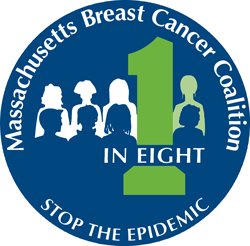
Mariah Blake, Reporter for Mother Jones, recently wrote a scary yet informative piece on a very real consequence of our virtually non-existent chemical regulatory system: when one chemical is removed from products, there is no guarantee in place that the replacement is any safer. She uses the recent example of BPA in plastic products to highlight this issue, and the plastic industry’s effort to cover it up.
We’ve included some excerpts from the article below but if you would like to read the full text, you can click the link at the bottom of this post.
Each night at dinnertime, a familiar ritual played out in Michael Green’s home: He’d slide a stainless steel sippy cup across the table to his two-year-old daughter, Juliette, and she’d howl for the pink plastic one. Often, Green gave in. But he had a nagging feeling. As an environmental-health advocate, he had fought to rid sippy cups and baby bottles of the common plastic additive bisphenol A (BPA), which mimics the hormone estrogen and has been linked to a long list of serious health problems. Juliette’s sippy cup was made from a new generation of BPA-free plastics, but Green, who runs the Oakland, California-based Center for Environmental Health, had come across research suggesting some of these contained synthetic estrogens, too.
…
The center shipped Juliette’s plastic cup, along with 17 others purchased from Target, Walmart, and Babies R Us, to CertiChem, a lab in Austin, Texas. More than a quarter—including Juliette’s—came back positive for estrogenic activity. These results mirrored the lab’s findings in its broader National Institutes of Health-funded research on BPA-free plastics.
…
Those startling results set off a bitter fight with the $375-billion-a-year plastics industry. The American Chemistry Council, which lobbies for plastics makers and has sought to refute the science linking BPA to health problems, has teamed up with Tennessee-based Eastman Chemical—the maker of Tritan, a widely used plastic marketed as being free of estrogenic activity.
…
“A poison kills you,” says biology professor Frederick vom Saal. “A chemical like BPA reprograms your cells and ends up causing a disease in your grandchild that kills him.”
…
Eastman’s offensive is just the latest in a wide-ranging industry campaign to cast doubt on the potential dangers of plastics in food containers, packaging, and toys—a campaign that closely resembles the methods Big Tobacco used to stifle scientific evidence about the dangers of smoking. Indeed, in many cases, the plastics and chemical industries have relied on the same scientists and consultants who defended Big Tobacco.
…
All the while, evidence is mounting that the products so prevalent in our daily lives may be leaching toxic chemicals into our bodies, with consequences affecting not just us, but many generations to come.
…
US regulators also have continued to ignore the mounting evidence linking BPA and similar chemicals to human disease, even as bans have cropped up around the world. Although more than 90 studies examining people with various levels of exposure suggest BPA affects humans much as it does animals, the FDA recently announced that its research “supports the safety of BPA” in food containers and packaging. And the EPA program that was supposed to screen some 80,000 chemicals for endocrine disruption hasn’t fully vetted a single substance.
Read the full text: The Scary New Evidence on BPA-Free Plastics, by Mariah Blake at Mother Jones

